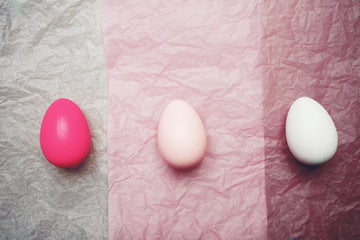Understanding your menstrual cycle is crucial for your overall well-being, especially if you plan on starting a family or want to keep track of your fertility and health. Despite being a natural and common experience for half of the world's population, there is a surprising amount of confusion and misinformation surrounding periods, which is why it's important to educate yourself on this topic.

Understanding your menstrual cycle is crucial for your overall well-being, especially if you plan on starting a family or want to keep track of your fertility and health. Despite being a natural and common experience for half of the world's population, there is a surprising amount of confusion and misinformation surrounding periods, which is why it's important to educate yourself on this topic.
Essentially, the menstrual cycle is a monthly sequence of changes that a woman's reproductive system goes through in preparation for a potential pregnancy. During each cycle, an egg develops and is released from the ovaries, while the lining of the uterus builds up in anticipation of a fertilized egg. If no pregnancy occurs, the uterine lining is shed as a menstrual period, and the cycle starts anew.
It's important to note that the length of the menstrual cycle varies from woman to woman, ranging anywhere from 21 to 40 days, with an average length of 28 days. Each menstrual cycle has three distinct phases:
1. Follicular Phase (Days 1-14)
The first 14 days of your menstrual cycle are known as the follicular phase, which begins on Day 1 of your period. Typically lasting anywhere from 2 to 7 days, your period may bring a range of symptoms such as cramps, bloating, tender breasts, and lower back pain. While some periods may be relatively painless, others may be more uncomfortable.
As your body sheds the uterine lining during this phase, your ovaries are simultaneously preparing to ovulate once again. The pituitary gland releases a hormone called FSH (follicle-stimulating hormone), which prompts several follicles, each containing an immature egg, to rise to the surface of the ovary. Eventually, one of these follicles will develop and release an egg. Throughout the follicular phase, the maturing follicle produces estrogen, which gradually increases and peaks just before ovulation. As your menstrual flow comes to an end, the lining of your womb thickens in preparation for a potential pregnancy.
2. Ovulatory Phase (Day14)
On Day 14 of your menstrual cycle, you enter the ovulatory phase, which is the only time during your cycle that you can conceive. Once the egg is released from the ovary, it travels down the fallopian tube toward the uterus. If the egg isn't fertilized and pregnancy doesn't occur, the egg will be naturally absorbed into the body.
Contrary to popular belief, ovulation doesn't always occur in the middle of your cycle. In fact, it typically takes place 12-16 days before your next period begins, which is known as the fertile window. So, if you have a 28-day cycle, you may ovulate between Day 12 and Day 16, but if your cycle lasts 32 days, you'll likely ovulate on Day 17 or 18. While the luteal phase remains relatively consistent at around 14 days after ovulation (which only lasts a few hours), the follicular phase can vary in length from 10 to 16 days. If the follicular phase is prolonged, ovulation may occur later than expected or not at all.
3. Luteal Phase (Days 14-28)
As you enter the luteal phase of your menstrual cycle (Days 14-28), the follicle that released the egg transforms into the corpus luteum. This structure releases hormones, mostly progesterone, and some estrogen. Following ovulation, estrogen levels drop, and progesterone levels rise. This increase in progesterone causes your body temperature to fluctuate at a higher temperature than during the follicular phase. This slight rise in body temperature is a direct result of ovulation and can be a reliable indication that ovulation has occurred.
If the egg has been fertilized, progesterone levels will continue to rise. However, if fertilization doesn't occur, progesterone levels will drop, and the lining of your womb will shed, resulting in your period. Toward the end of the luteal phase, you may experience a range of symptoms, including tender or lumpy breasts, fluid retention, food cravings, bloating, mood swings, irritability, and depression. It's estimated that as many as 3 out of 4 women experience some symptoms of PMS.
Don't let the guesswork of ovulation hold you back any longer. Order the femSense® ovulation tracker today and take control of your reproductive health!

In a nutshell, it's always a good idea to track your menstrual cycle, not just when you're trying to conceive. Understanding the female reproductive system, when you're most fertile, and the duration of your fertile window is crucial. By getting to know your own body and learning about the biology of making babies, menstruation, hormones, and ovulation, you can make informed decisions about your reproductive health. If you're ready to track your fertility using the temperature method, femSense® is the perfect solution for you. The femSense® app simplifies the complicated recording and evaluation of temperature values, eliminating the possibility of making mistakes. The algorithm does all the hard work in the background and evaluates the data separately for each individual user. The app filters out essential information, such as when you're most fertile and if and when you ovulated, making it easier to plan or prevent a pregnancy.





